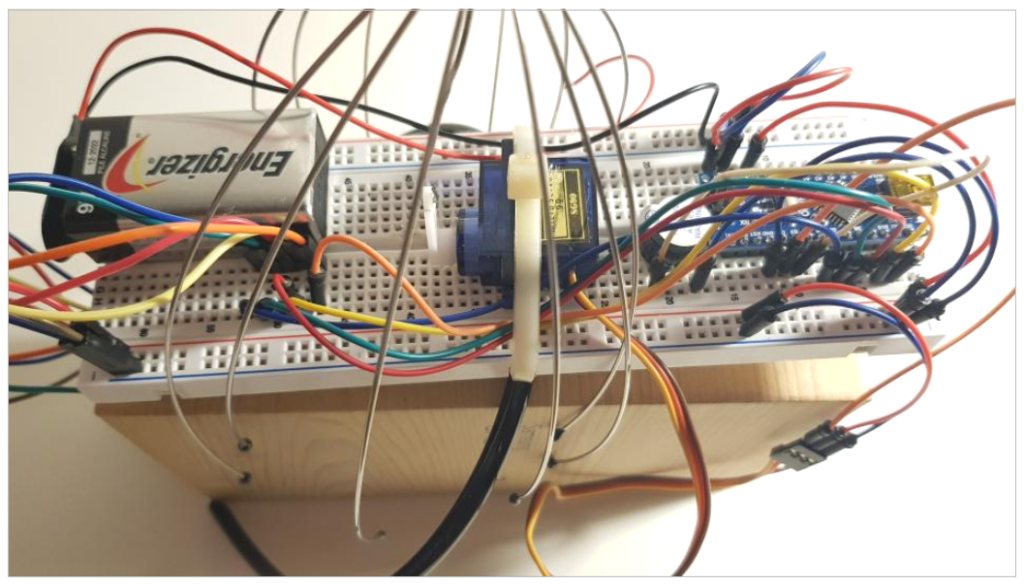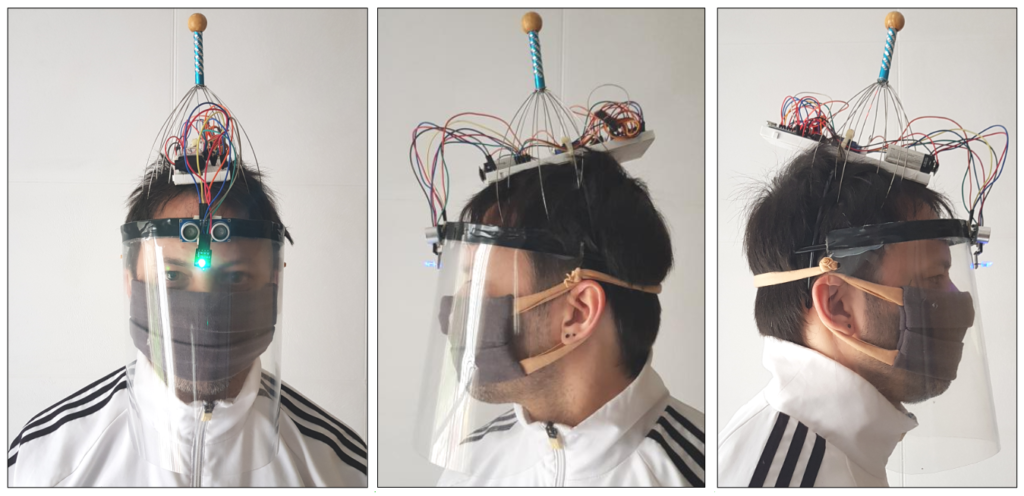My caress can kill you
2020
Electronic Art * Interactive Art * Videoperformance
Hardware: Arduino, proximity sensor, servo motors, leds, buzzer.
Centro Cultural de Espana en Buenos Aires CCEBA
Cuidados (en)mascarados
Laboratory dictated by Laura Nieves y Mariela Yeregui
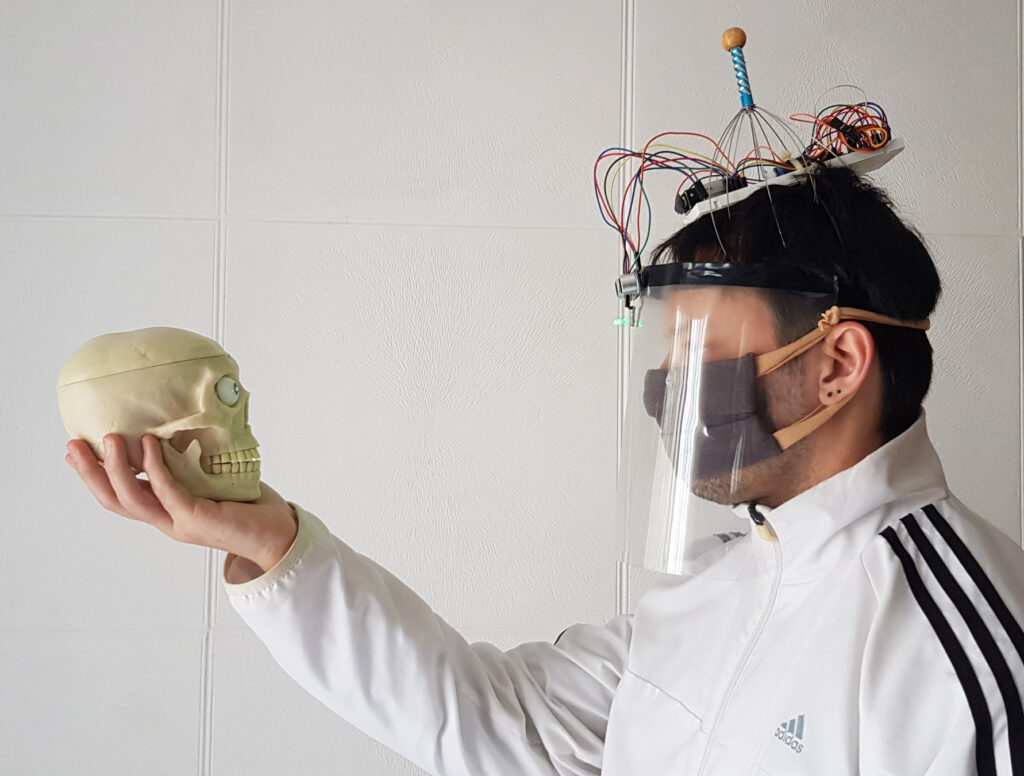
Introduction
Taking the Distance – Proximity axis, I developed a fully functional mask made up of an acetate diving suit and a fabric chinstrap. To this mask I attached a protoboard with a circuit developed with an Arduino Nano controller. The circuit is mainly made up of a proximity sensor, a buzzer, an RGB LED and a servomotor that moves a head massager.
Foundation
Masks are not only made to protect us, but also to protect others from us. A good intention or a personal need to get closer to a loved one can be fatal. In a context where sometimes it seems that we are all trying to distance ourselves from others to take care of ourselves, I think it can be good to remember that with social distancing we are not only protecting ourselves, but we are also protecting others. The project tries to stimulate the user to stay in the right distance in which he is not so close as to be a risk to the other, and not so far away as to ignore him.
Functioning
The proximity sensor senses the space that surrounds us, by not detecting anyone within the established social distance plus a plus (one and a half meters) a cold blue LED, located on the front of the mask, indicates that we are at a distance “more than sure”. When the distance sensed is between one and a half meters and one meter (minimum social distance), the led changes to green and the device starts to activate the head massager, creating a bond through touch, a massage, a caress, a positive encouragement. This distance is what allows us to be close without being dangerous, but it also tells us that we are not so far from each other. In the case of passing the minimum social distance, the LED turns red, the massage device stops working and a high-pitched alarm sound is triggered.
Project development
a) Chinstrap and diving suit
The first thing I put together was the chinstrap, which was taken from various Internet models and modified. I put it together from a soft and comfortable fabric with a system that has a pocket which can contain a napkin that works as a filter. I attached an elastic strap also made of a soft fabric.

Then I built the diving suit, also first I noticed what was on the web and then I made my own model using two plastic hair bands, an acetate and the same type of soft elastic strap that I used for the chinstrap. With a silicone gun glue the two headbands in such a way that one is tight on the forehead and the other is used to hold the acetate. The acetate was also glued to the headband with the glue gun. To finish, place a strip of edge cover on the part of the headband that rests on the forehead, so that the headband does not bother or leave marks on the user’s forehead.
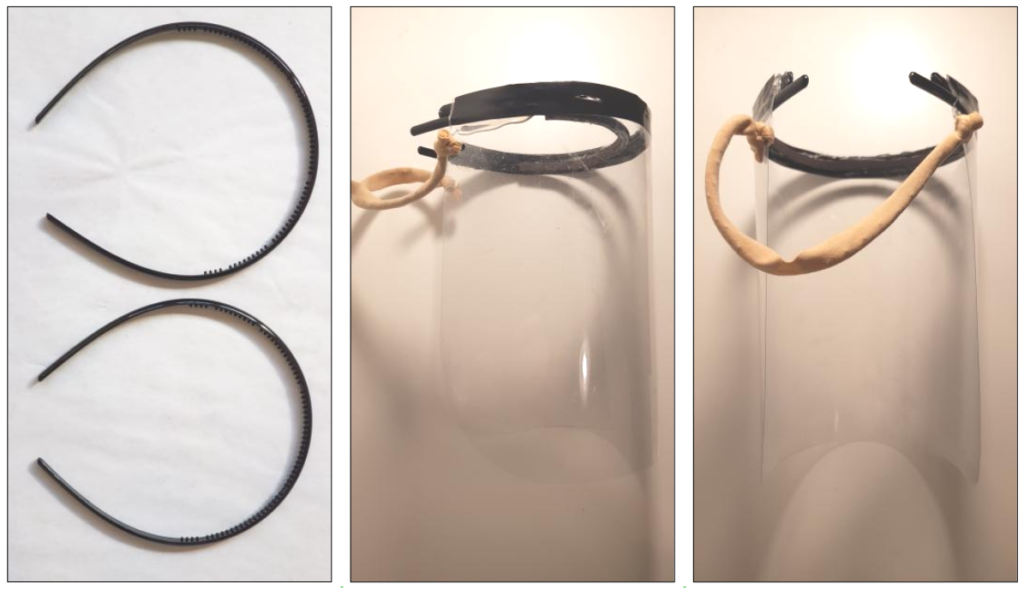
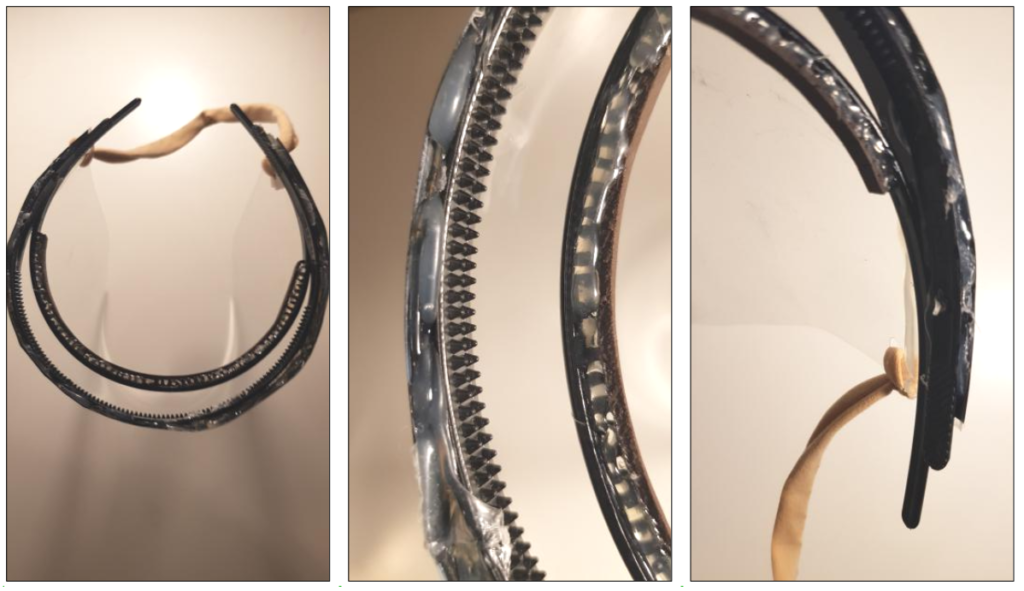
b) Electronics
I built the circuit on a breadboard that was then attached to the diving suit by means of a hair band. This headband is attached to the breadboard with a zip tie, which I also used to adjust the servo motor. This servo motor has a strong wire that attaches to the head massager. The proximity sensor and the RGB LED are attached to the helmet.
